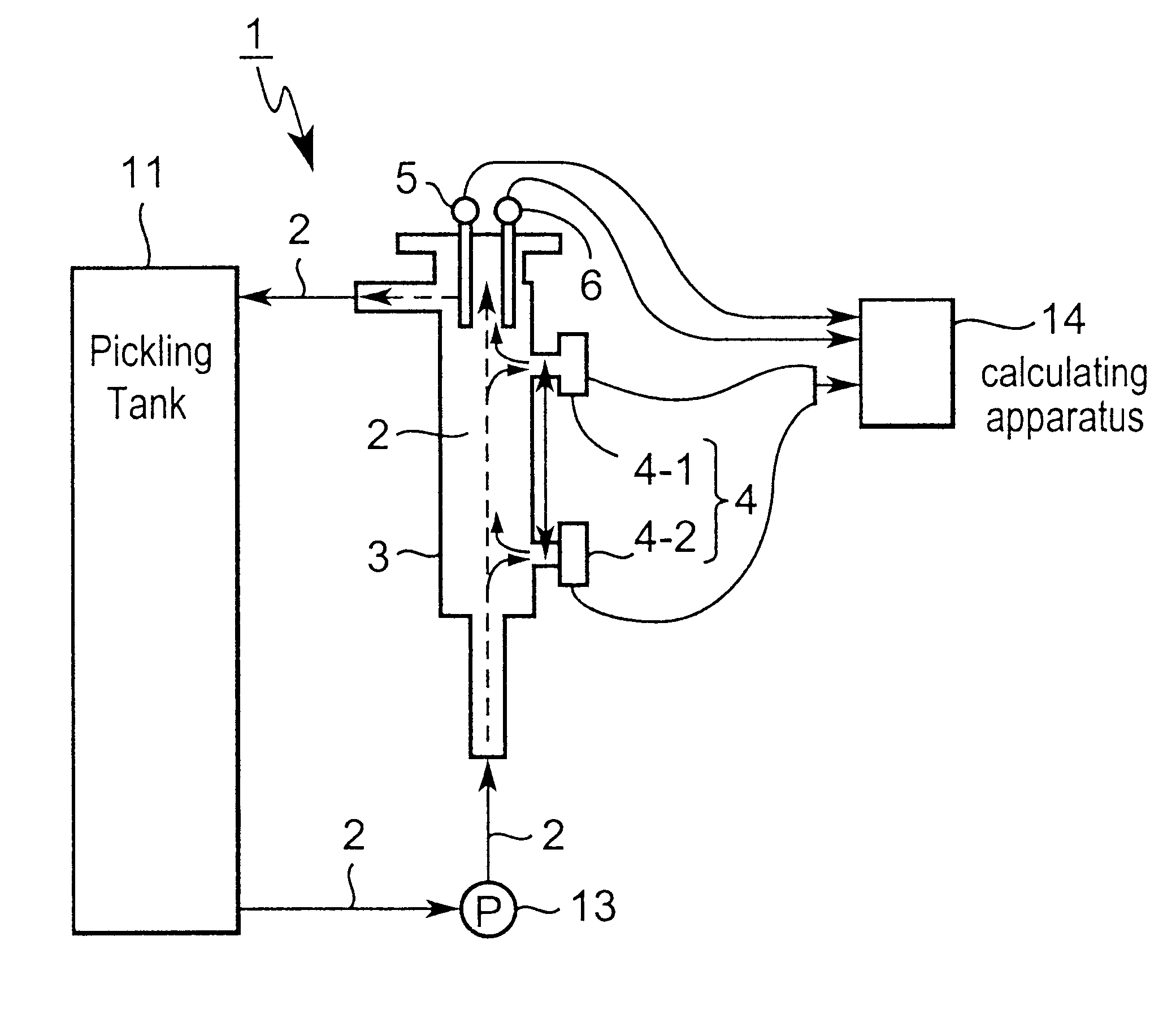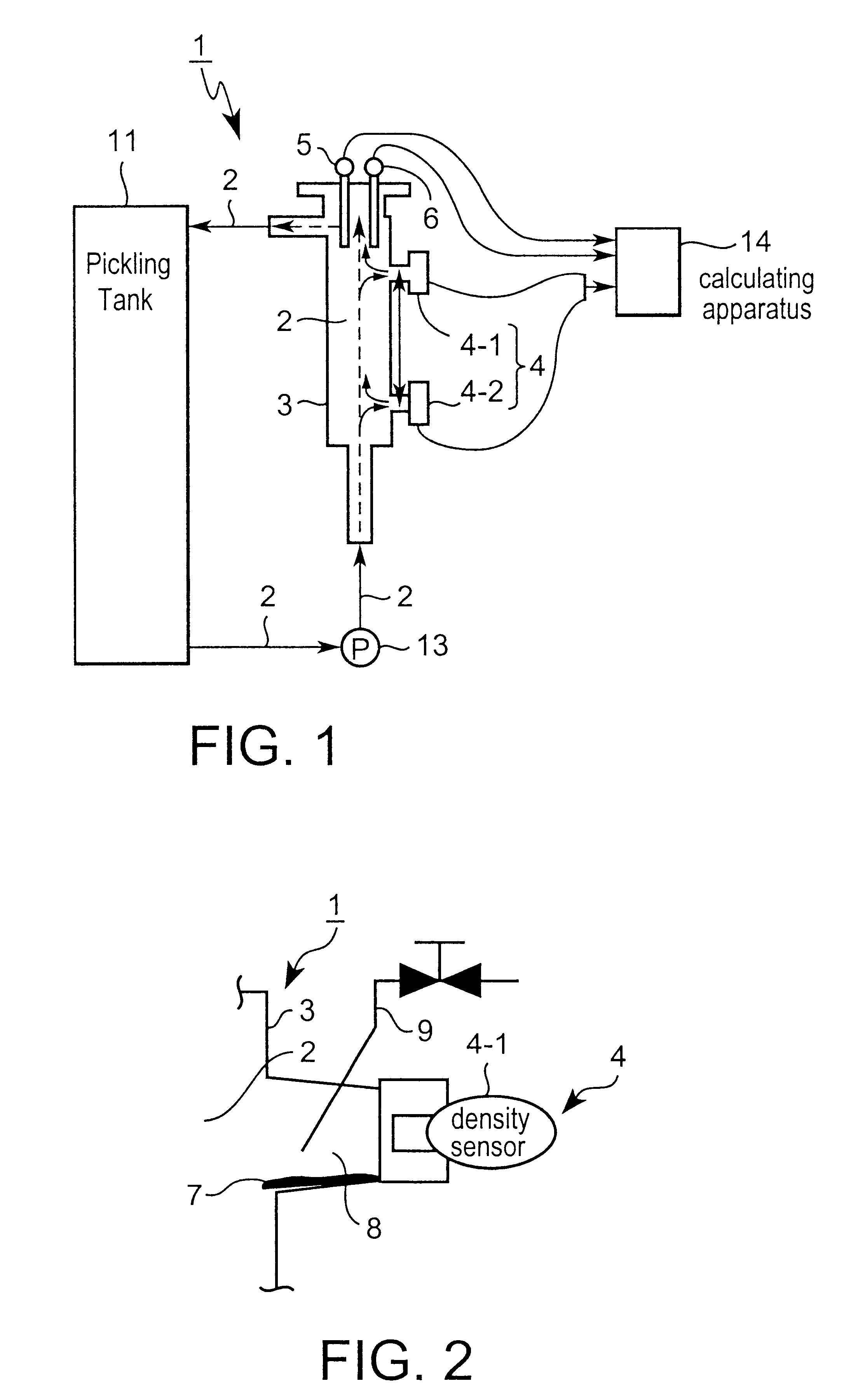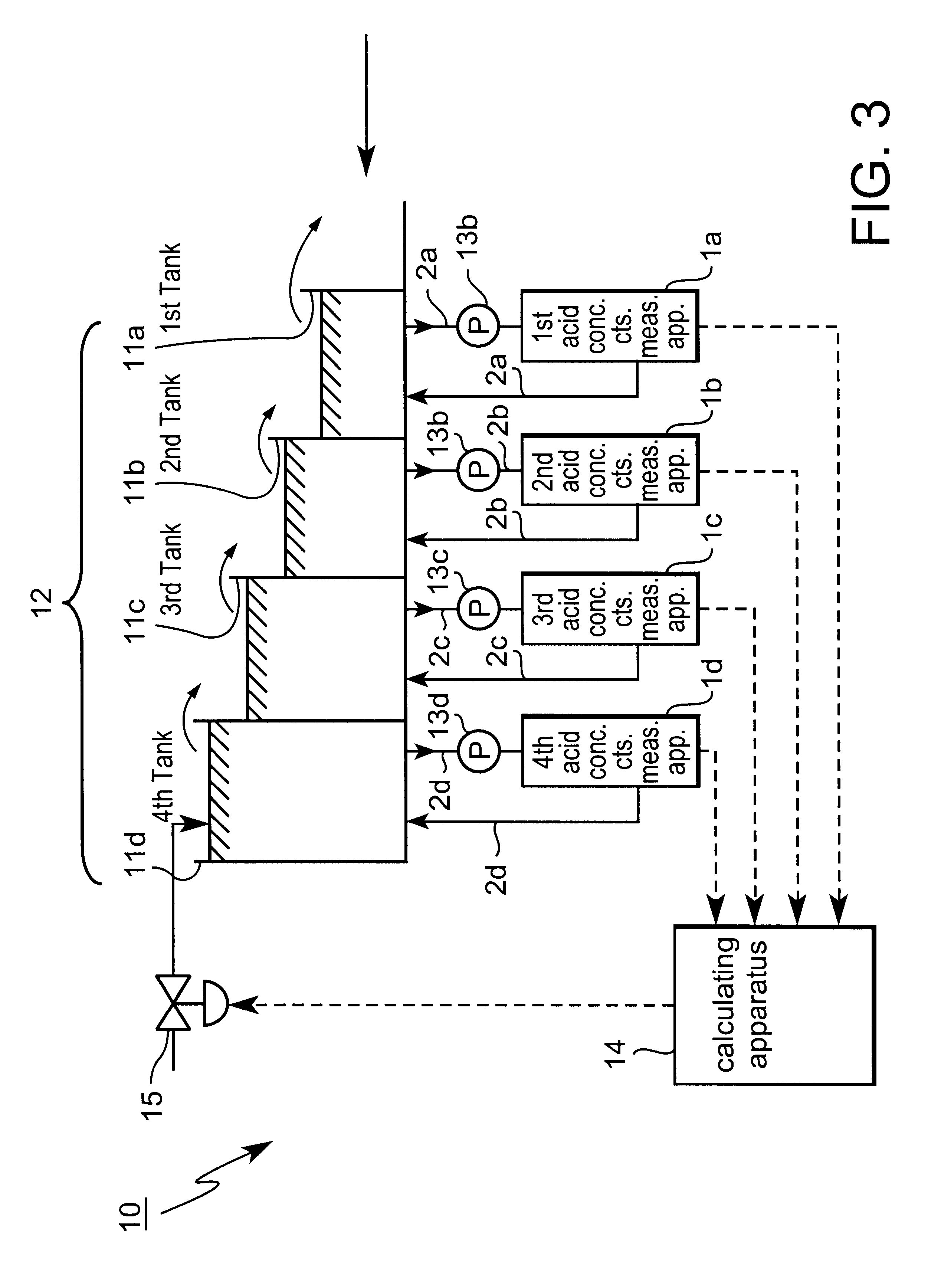However, when acid solution is manually supplied to a pickling tank, it is not possible to accurately cope with changes in the concentration of the pickling solution in the pickling tank.
Therefore, it is easy for fluctuations in the concentration of the pickling solution to become large, and it is easy for the amount of acid solution which is supplied to become too great when trying to stay on the safe side.
Therefore, the consumption of the pickling solution per unit of output tends to become poor when acid solution is manually supplied to a pickling tank.
Therefore, the sample liquid flows intermittently into the measuring
cell, so the retained sample liquid solidifies in
piping and clogs up the
piping, and measuring becomes impossible a short time after it is begun.
In addition, when performing measuring using a
titration-type analyzer, only a minute quantity of sample liquid is supplied, so fine tubes within the
piping system become clogged.
If a filtering apparatus is provided to prevent clogging, a complicated piping
system having a switching mechanism becomes necessary.
An increase in the number of times the switching mechanism is switched leads to clogging of the piping.
In addition, a
titration-type analyzer is expensive.
The switching of the sample pipes also causes clogging of the pipes to become frequent.
As a result, even if a
titration-type analyzer is applied to an acid concentration
control system for a continuous pickling line, it is actually impossible to output the measured acid concentration of the pickling solution at sufficiently short measurement intervals.
Thus, measurement of acid concentration using a titration-type analyzer has a long reaction time for chemicals, a long
switching time by a pretreatment apparatus at the time of cleaning, and a long sampling time.
Therefore, a
time lag between sampling and measuring is unavoidable.
Accordingly, it was difficult to control the acid concentration of a pickling solution using a titration-type analyzer with high accuracy.
In this manner, measuring the acid concentration of a pickling solution in a pickling tank requires much time.
However, in this type of continuous pickling line, reaction between the pickling solution and the scale layer on steel strip is actually more vigorous in more upstream pickling tanks than in the final pickling tank.
Therefore, even if it is possible to measure the acid concentration and control the supply of acid solution in real time, increases in acid consumption per unit of output, i.e., in cost are unavoidable.
Furthermore, when carrying out that invention, if acid concentration is measured over a long period of time, sampling piping becomes clogged due to acid, leading to a decrease in the operating efficiency of the measuring device.
However, as previously stated, it is impossible to measure the acid concentration of pickling solution at sufficiently short measurement intervals.
Furthermore, in that invention, when water is added, the acid concentration of waste acid decreases, so the acid consumption per unit of output at the time of
recovery of waste acid becomes poor.
However, control according to that proposal cannot be applied without any equipment modification to a continuous pickling line of the type in which pickling solution overflows between adjoining pickling tanks.
Therefore, considerable investment in equipment and installation space are required, so it is actually quite difficult to carry out that invention.
Furthermore, scale loss during pickling varies with the scale thickness, which varies depending, for example, on the winding temperature during hot rolling.
Thus, all of the methods of the prior art have the fatal problem--that the acid concentration of pickling solution contained in pickling tanks cannot be measured at sufficiently short measurement intervals.
Therefore, not only when the control of the supply of acid solution is performed manually but also when it is performed automatically, it was necessary to put up with response lags and a decrease in accuracy in the control of the acid concentration of pickling solution.
However, in that invention, pickling solution is diluted with water, so the pickling solution ends up being waste liquid after measuring.
In the past, even if pickling solution was made to continuously flow in this manner, regions where the flow speed decreased always developed, and it was thought that the pickling solution would clog up in a
short length of time in the regions of decreased flow speed.
On the contrary, if a filtering apparatus for preventing clogging is provided in the circulation flow path 2, there is the danger of the occurrence of clogging in the filtering apparatus.
However, in the case in which pickling solution in a tank on a downstream side is made to successively overflow to adjoining pickling tanks on an upstream side and acid solution is supplied to a final pickling tank, control of the concentration by controlling the supply of acid solution to the first tank 21a--the second tank 21c is very difficult compared to that with respect to the fourth tank 21d, so there is little sense in performing
feedback control.
 Login to View More
Login to View More 


